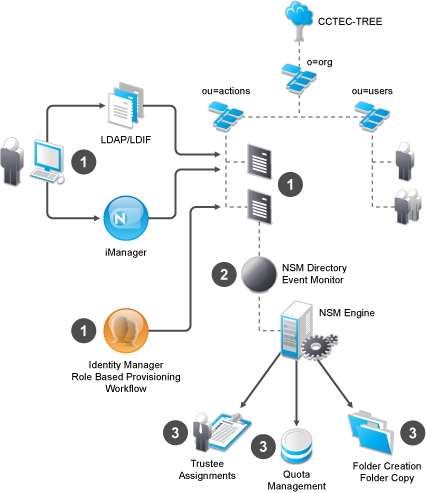1.2 How do Action Objects work?
Action Objects are processed by the NSM Engine, and they provide many of the same benefits of policy-based actions in Novell Storage Manager, such as the state-machine architecture provided by Novell Storage Manager for action processing.
Figure 1-1 How Action Objects Work.

-
Action Objects can be created and managed by any application or process that can modify objects in eDirectory, such as ConsoleOne, iManager, Novell Identity Manager, and even LDAP / LDIF.
-
After the objects have been created and the trigger attribute has been set, the Event Monitor sees the trigger event and notifies the NSM Engine, placing an entry in the Engine's process queue.
-
The Engine processes the Action Object according to the rules written in the object's attributes. Depending on the action and rules, the Engine might set trustee rights on a folder, change the directory quota for a folder, or even create new folders and copy data. See Section 6.0, Actions Reference.